A flatbed truck is perfect for hauling big, heavy loads of cargo. It is perfect for farming, construction, delivery, heavy equipment transport, and more. This design is specifically made for a work vehicle. But have you ever asked if flatbeds are universal? In this article, we researched and asked experts that exact question, and this is what we found out.
Yes, flatbeds are universal in the sense that they can easily be modified to be mounted on any chassis of the same kind of truck. This means that a flatbed for a half-ton truck will universally fit other half-ton trucks, but it would not fit on a one-ton or a quarter-ton.
If it's a dually, it should also be dually. The reason behind this is that the size of the trucks is different; therefore, the mounts would not be located uniformly.
Interested to learn more facts about truck flatbeds? Continue reading as we discuss other related questions like flatbed measurements, a cab chassis bed, compatibility of other truck beds from different brands, and more. We will also be suggesting some very informative articles at the end of this write-up, so go on and finish reading.
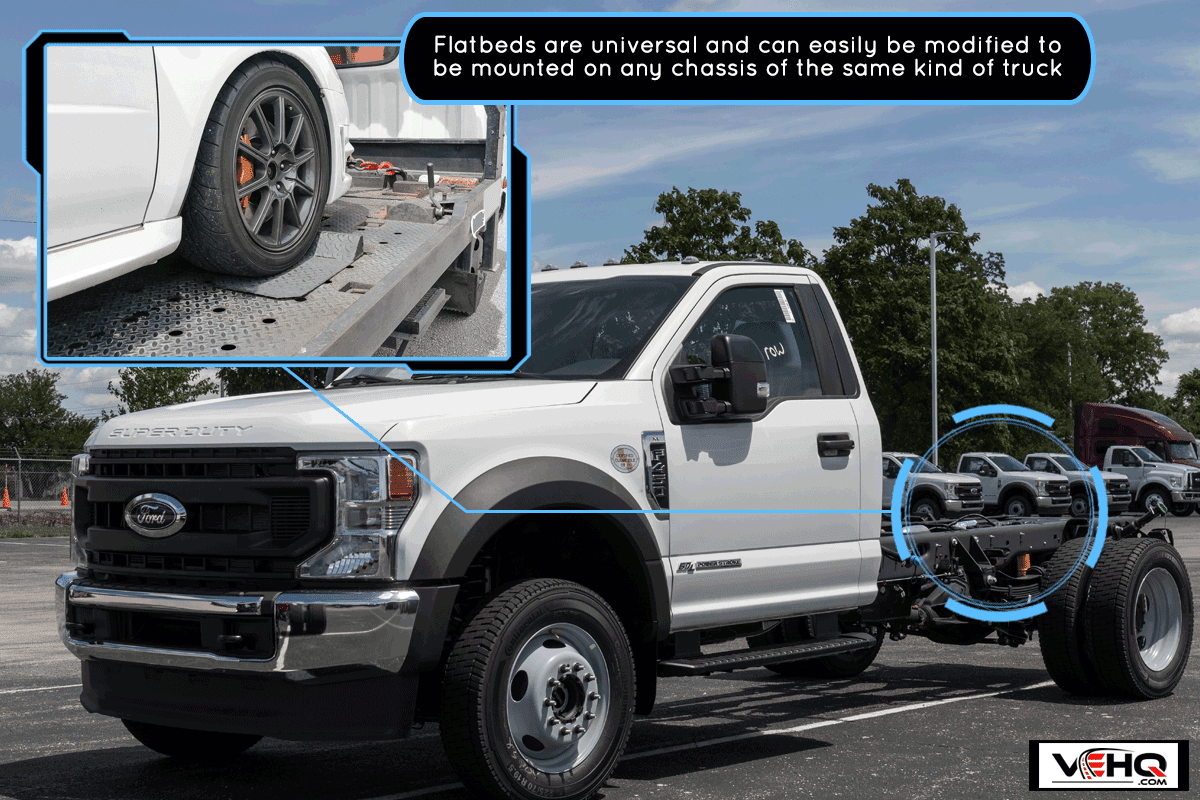
Are Truck Flatbeds Universal?
When we say truck flatbeds are universal, it does not mean that one flatbed will fit all kinds of trucks. It would only be universal in the class that it was designed for.
If you have a flatbed built for a 1500 truck, chances are it would fit other 1500 trucks no matter the brand.
There is a chance that some mounts would be different as chassis from different car manufacturers are not 100% identical, but the difference would only be minimal and easy to compensate for.
The problem would arise if you try to outfit a half-ton truck with a flatbed for a full-size and vice versa. It would either be too big or too small and could not fit the chassis of the truck bed where it will be laid on.
Additionally, other factors like the overall design could be compromised.
Disproportionate dimensions around your truck can cause problems such as aerodynamic drag (which can be bad for fuel economy) and a wider vehicle (which can cause problems for space and parking).
How do you measure a flat bed?
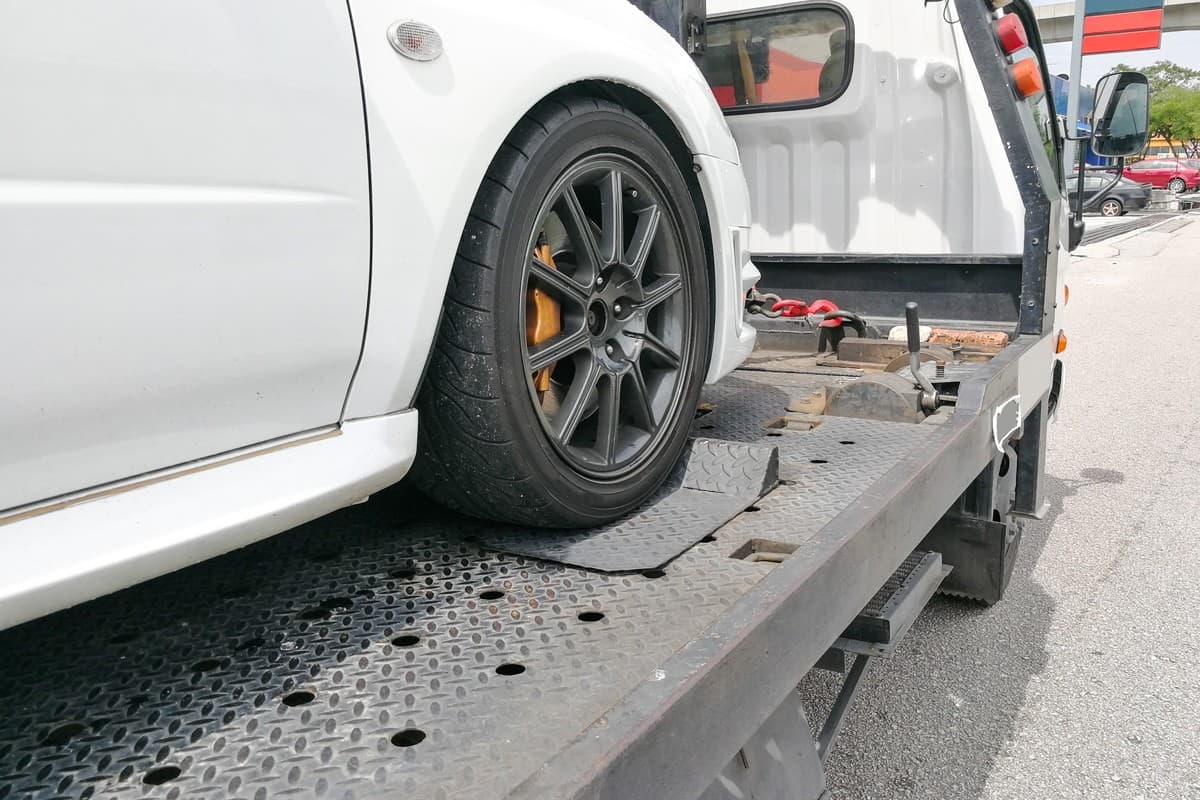
Now you have a truck flatbed, you need to know the measure of the flatbed before placing it on your truck. Below are some steps in measuring the length of truck beds, flat and normal.
Step 1
Use a tool like a measuring tape and start measuring at the bulkhead of the truck bed. The bulkhead is the part of the bed nearest to the cabin.
Step 2
Extend the measuring tape from the bulkhead to your tailgate. Get the length of the measurements in inches.
Step 3
Ford F-150 Bed Sizes
- Short bed measured at 67 inches | Advertised Length: 5'7"
- Standard bed measured at 78.9 inches | Advertised Length: 6'7"
- Long bed measured at 97.6 inches | Advertised Length: 8"
RAM 1500 Bed Sizes
- Short bed measured at 67.4 inches | Advertised Length: 5'7"
- Standard measured at 76.3 inches | Advertised Length: 6'4"
- Long bed measured at 98.3 inches Advertised Length: 8"
Chevy & GMC 1500 Bed Sizes
- Short bed measured at 69.3 inches, marketed at 5'8"
- Standard measured at 78.8 inches, marketed at 6'6"
- Long bed measured at 97.8 inches, marketed at 8"
Chevy Colorado & GMC Canyon Bed Sizes
- Short bed measured at 62.7 inches, marketed at 5'2"
- Long bed measured at 74 inches, marketed at 6'2"
Toyota Tundra Bed Sizes
- Short bed measured at 66.7 inches, marketed at 5'7"
- Standard bed measured at 78.7 inches, marketed at 6'7"
- Long bed measured at 97.6 inches, marketed at 8"
Toyota Tacoma Bed Sizes
- Short bed measured at 60.3 inches, marketed at 5'2"
- Standard bed measured at 73.5 inches, marketed at 6'2"
Note that these are regular truck bed measurements with side panels, front panels, and a tailgate. For flatbeds, you only have the bed and nothing else. That is why a flatbed can be a bit longer compared to a normal truck bed.
Not all truck beds are designed to be hauled with, as some use a gooseneck trailer, which comes with a gooseneck attachment. These attachments can either be concealed or not.
If it is not, it can take up some space and could be an obstruction when trying to load a vehicle or a motorbike directly on the bed.
Some flatbeds are completely designed for a trailer and cannot carry loads at the bed. Flatbeds are designed and usually used for heavier work compared to non-flatbed trucks.
What is a cab chassis bed?
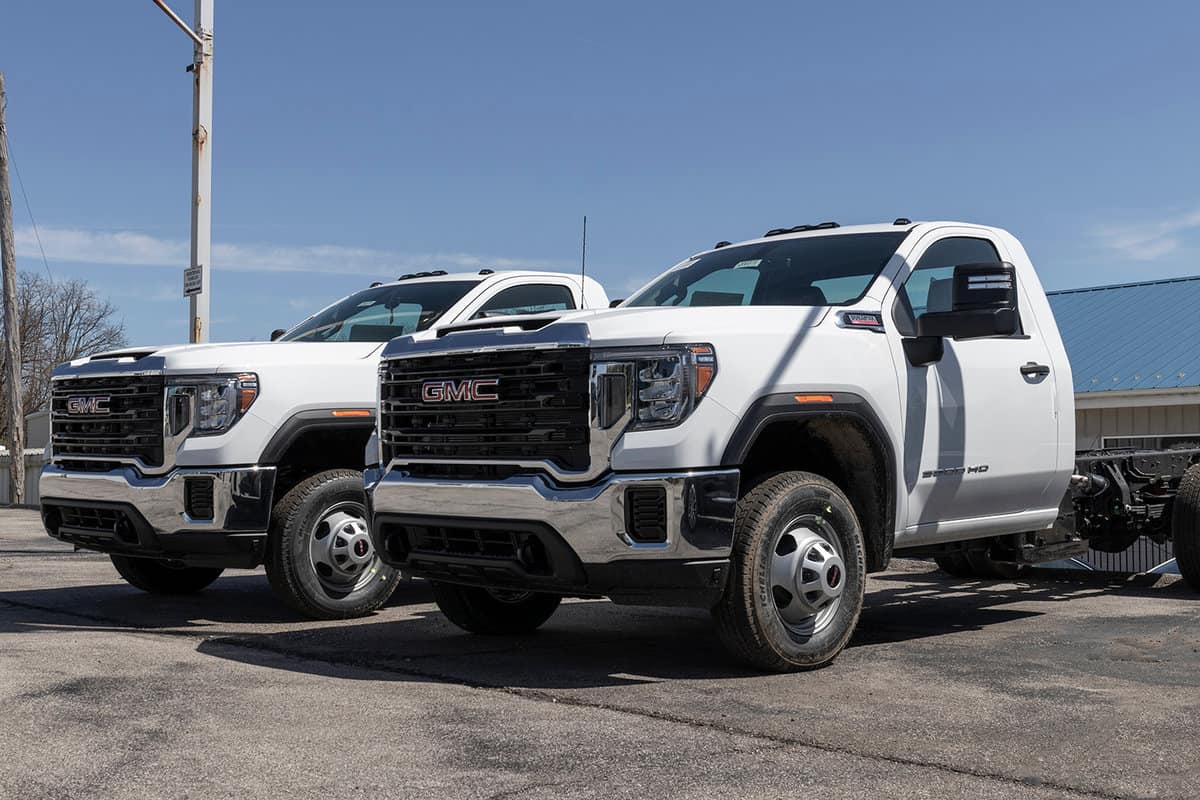
A cab chassis bed is essentially a truck without any kind of truck bed at the back. This configuration is usually the base trim of a truck.
This is because car manufacturers like Ford, GM, and Toyota do not produce a truck with a flatbed in stock directly from the assembly line.
To have a flatbed truck, an owner will either buy a cab and chassis truck or convert a normal truck by removing the truck bed and replacing it with a flatbed.
An example of this is the Ford F550. It only comes with a chassis and bed configuration, which makes it great for ambulances, tow trucks, etc.
Are cab and chassis trucks different?
The main difference between a cab and chassis truck from a normal pickup truck beside a truck bed is the lack of luxury.
In modern pickups, luxury amenities like technology are present. Leather seats with heating and cooling capabilities, heated steering wheel, turn-by-turn navigation, to name a few, are staples.
With a cab and chassis, it is usually straightforward, especially the dashboard: no big touchscreen infotainment with satellite GPS. Only a radio with buttons controlling it and a manual climate control system.
Will a regular bed fit on a cab and chassis?
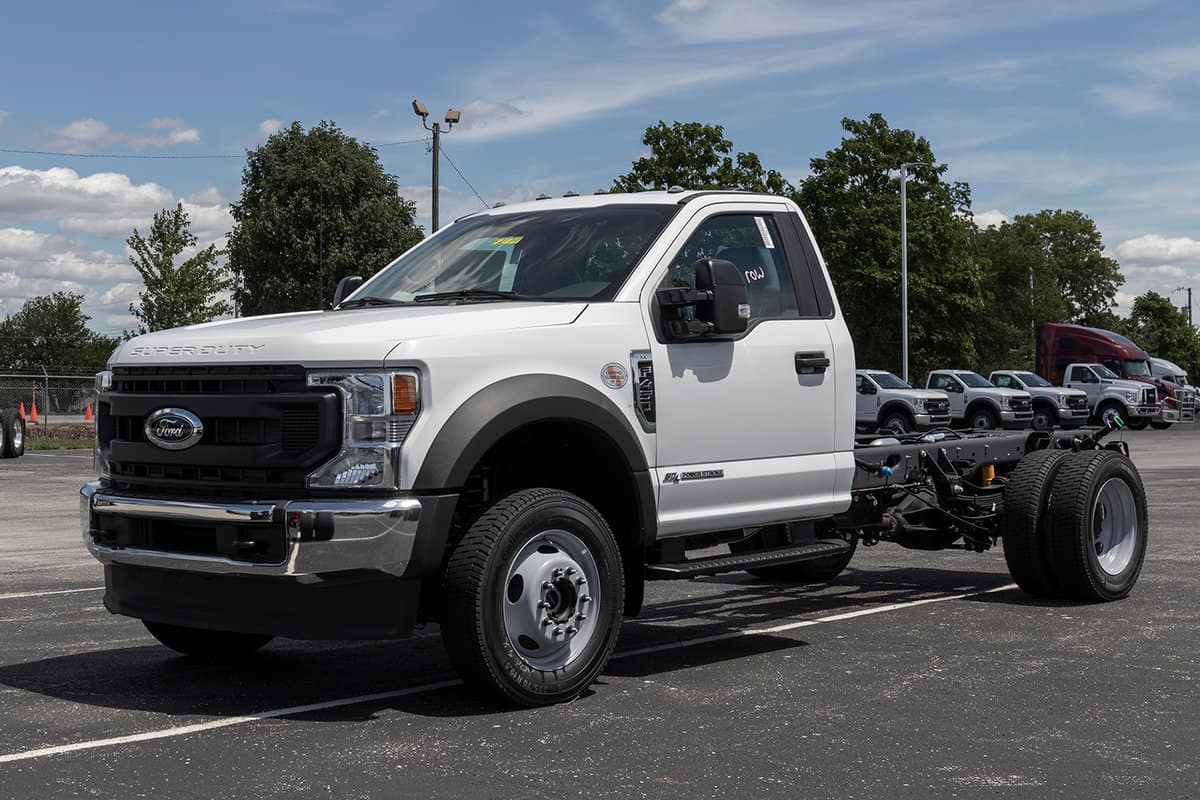
Yes, a regular truck bed will definitely fit a cab and chassis, as these trucks usually come with a truck bed. If you buy a cab and chassis truck, everything will be the same with a truck that has a bed, except for the truck bed not being present in stock.
Hence the term cab and chassis because you will literally only get a truck with a cab and an open rear chassis. This is especially true of newer models.
In older models, a true chassis cab truck would have a narrower frame compared to a regular dually frame with a truck bed in stock.
That is why, if you are ordering from a flatbed manufacturer, they will ask if the truck was bought as a cab and chassis or if you had the truck bed deleted.
If you are a bit confused, here are some of the key differences between a cab and chassis compared to a box delete.
Chassis cab
- Cab trucks usually have straight frame rails that come in stock for provisions of aftermarket upgrades, like truck or van upfitters
- The frame rails are usually 37 inches apart from each other
- A measurement of 60 inches for the cab to center axle
- There are more leaf springs to accommodate greater loads compared to a standard pickup truck
- Aside from having more leaf springs, they are also shorter compared to regular trucks
Pickup and box delete
- A more curved frame aimed towards ride comfort and upgraded weight distribution
- The frame rails are usually 34 inches apart from each other
- A measurement of 56 inches for the cab to center axle
- Fewer leaf spring, especially at the rear
- And longer leaf springs for better flex (for off-roading) and ride quality
You must also remember that cab and chassis trucks are not only converted into flatbed trucks but are also converted into ambulances, firetrucks, campers, and more.
That is why straight frame rails for upfitters are also what mainly separates a cab and chassis from a box delete or regular truck with a removed truck bed.
Ordering a cab and chassis
Take note that you can have a cab and chassis in two ways: a true cab and chassis and a box delete. So, for example, if you want a luxury cab and chassis, car manufacturer Chevrolet offers a box delete for their 2500 and 3500 models.
This means that you can have a 2500 High Country HD converted into a flatbed truck.
Are Chevy truck beds compatible with GMC truck beds?
Chevy and GMC are under the umbrella of General Motors. They are owned, designed, and produced by the same company.
Both car brands also come from similar assembly plants, so the compatibility of parts such as truck beds will not be a problem. You can interchange them.
For a more in-depth review regarding this topic, we recommend this article: Are Chevy And GMC Truck Beds The Same [or Interchangable]?
What year Ford truck beds can be interchanged?
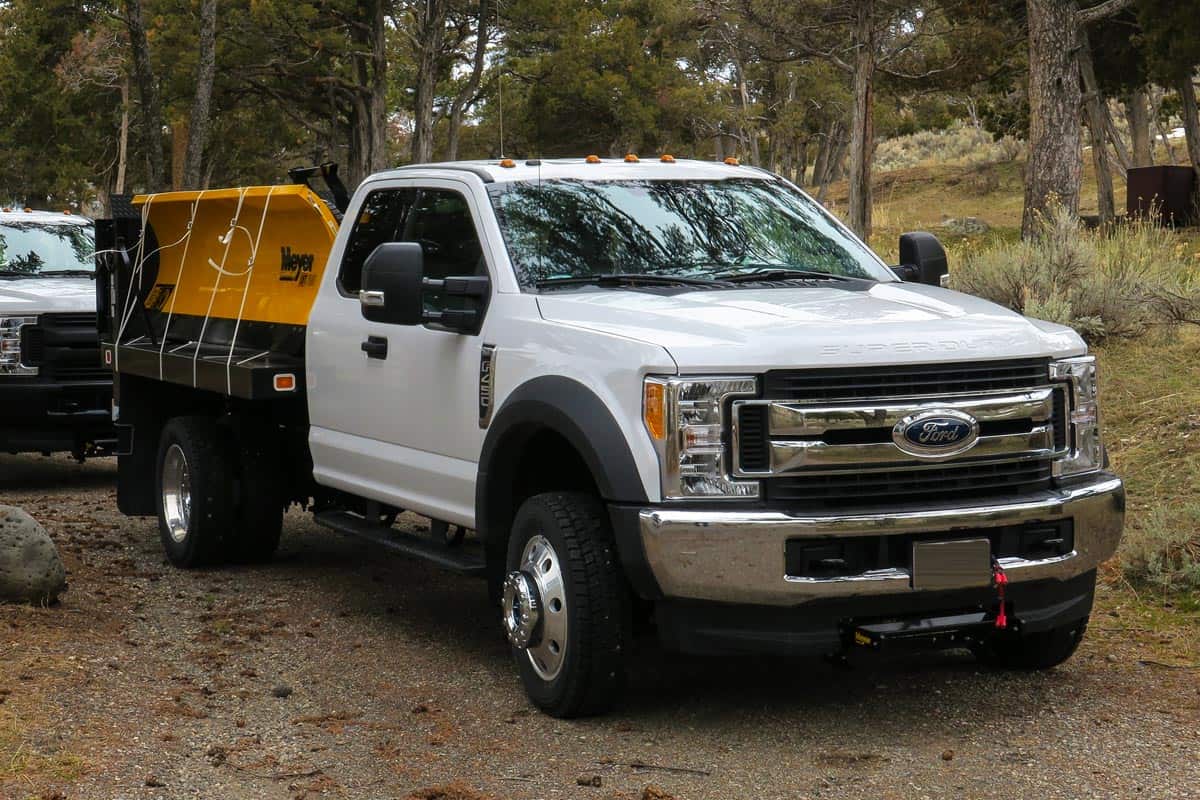
The F-250 lineups from 1999 up to 2016 have very similar truck bed mounts, so compatibility is not a problem.
This means that you can interchange your truck bed as with any F-250 inside the mentioned year models, as long as your truck is scoped with it as well.
In conclusion
Yes, flatbed trucks are universal, as long as they will be used with the same class and same wheel count of trucks.
This means that you can use a flatbed from a RAM 3500 dually to an F350 dually, same class and same wheel count (both are dually). This applies to all.
Here are some of our previously written articles that may interest you. Go ahead and have a look.
How Much Does a Flatbed Truck Cost?
How To Convert A Truck To A Flatbed
